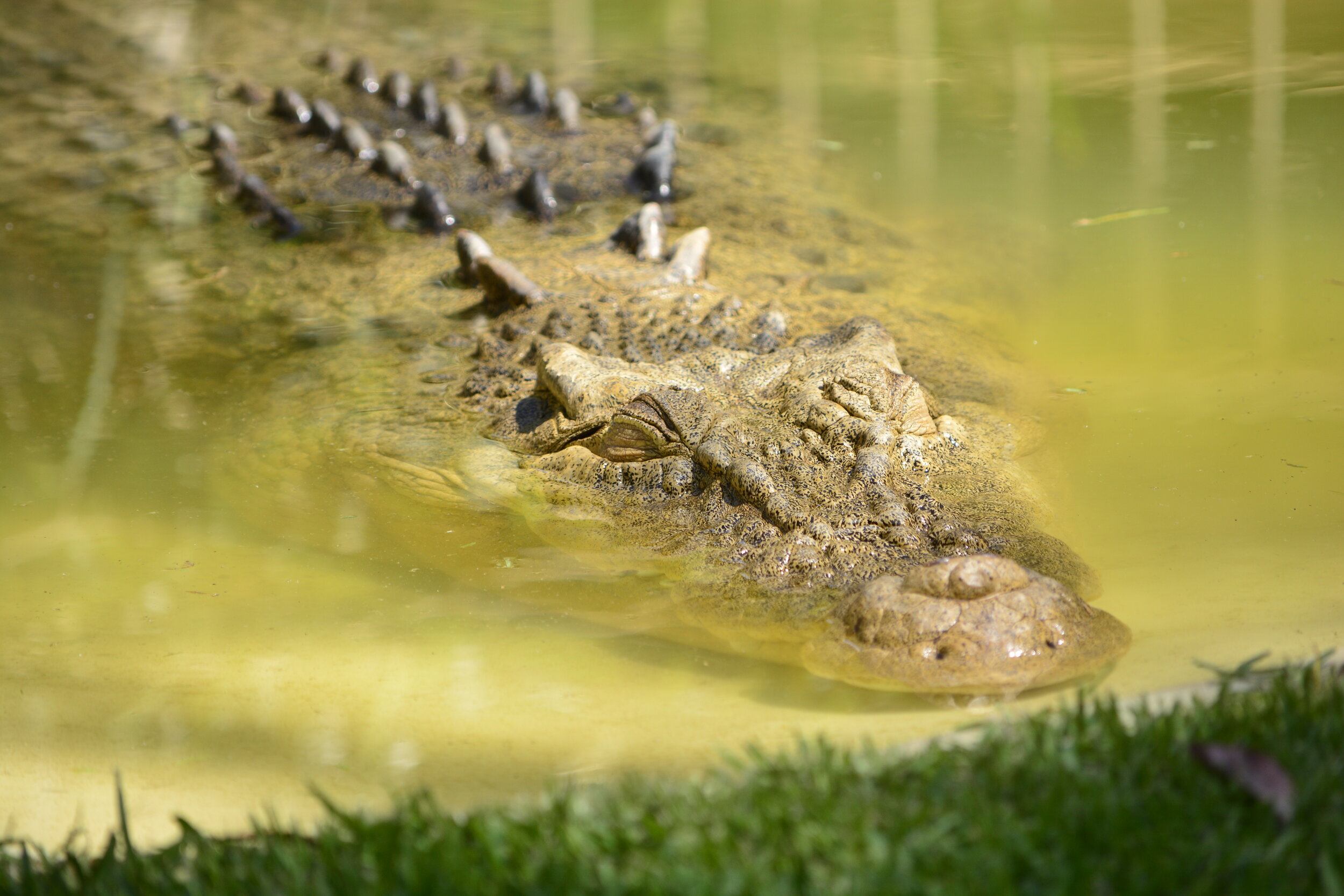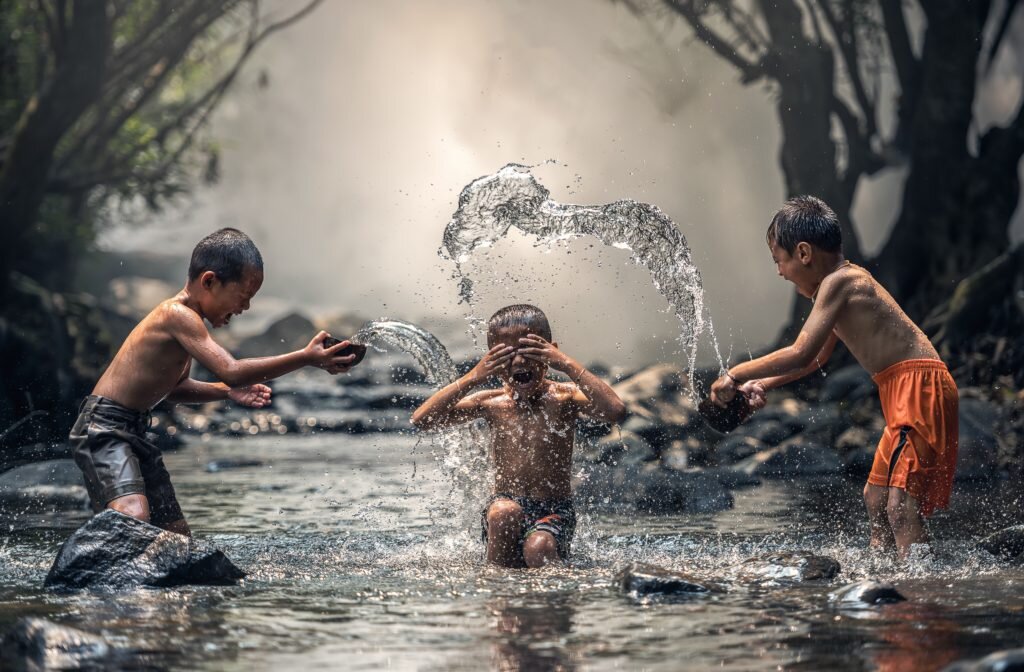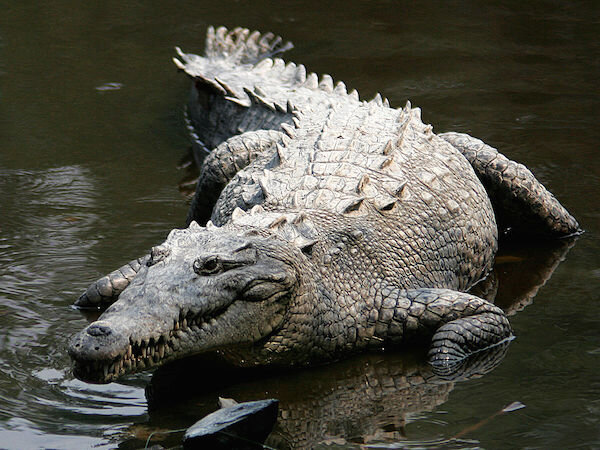
Education Assistance Cohabitation
Crocodilians inhabit a wide range of territory across much of equatorial earth in both fresh and salt water. Rivers, marshes, lakes and even the open ocean. Many people in developing nations depend on such areas for their livelihood, areas which crocodiles already inhabit. As such, human/crocodile conflicts (HCC) do occur. The side effects of high human demography & poachings have taken their toll on crocodiles; while crocodiles, being an opportunistic apex predator, will occasionally attack humans. The Crocodile Foundation voluntarily assists developing nations in helping to reduce their HCC numbers in areas where crocodile education, establishment of safety measures and assistance programs are unavailable or ineffective.
Reasons for crocodile attacks/bite incidents
Hunting for food: Crocodilians are opportunistic feeders and humans are in the size range of prey that can be taken by larger crocodilians.
Defense of territory: Some species are highly territorial and will defend their territory against intruders, including humans.
Defense of nest and/or young: Crocodilians will defend their nests from other predators. They also respond to distress calls (vocalizations) made by their young and may attack humans near hatchlings.
Mistaken identity: Some attacks might be directed at pets and people may be either injured/killed by mistake or when when trying to intervene. Fishermen checking nets, cleaning fish, or divers with fish kills may also be mistakenly attacked by crocodilians attracted to the fish.
Self-defense: Like most wild animals, crocodilians will defend themselves if provoked.
Attacks on humans are higher in regions where the population uses rivers and lakes as their primary water source for survival.
Loss of territory and the human demography amplify the human/crocodile possibility of conflict.
Out of the 26 species of crocodiles; the nile crocodile (crocodylus niloticus) in Africa, the saltwater crocodile (crocodylus porosus) in South East Asia and Australia, India’s mugger crocodile (crocodylus palustris) & the american crocodile (crocodylus acutus) in Central & South America have the highest number of recorded attacks on humans. Even though most crocodilians have the potential to attack humans; diet, size and aggressiveness are just a few factors that may or may not outline an attack.
The most sophisticated heart in the animal kingdom

The Poaching Dilemma
Sensitive Content
This page contains sensitive content which some people may find offensive or disturbing
Witnessed the rise of the pyramids

Africa
Africa’s poverty is widespread and access to clean water is a major issue. Many bathe, wash and drink from rivers that are inhabited with Nile crocodiles. Many attacks go unreported throughout most of Africa.
Nile crocodile
Crocodylus niloticus
Africa’s largest crocodile, the nile, historically had a widespread range throughout the continent. Now extinct in several regions due to human activity, this animal currently resides in 26 different African countries.
It is estimated that each year hundreds of people die from nile crocodile attacks in Africa. This aggressive species is believed to be responsible for a considerably greater number of fatal attacks on humans than saltwater crocodiles, statistically making the nile crocodile the most prolific predator of humans among wild animals. This may have more to do with the fact that many people in Africa tend to rely on crocodile riparian habitat for their livelihood, which is less prevalent in most of Asia and certainly less so in Australia.
Many of these attacks are never reported in the media. Without an accurate reporting system in place, crocodile attacks in Africa are difficult to track.
Many developing countries throughout Africa do not have crocodile outreach & safety programs set in place. That’s where The Crocodile Foundation steps in.
Worshipped in a variety of cultures

SouthEast Asia
Indonesia
At 273 million people, Indonesia is the fourth most populated country in the world. With a total coastline of 34,000 miles from 17,508 islands, it is 65% water and with a crocodile species on the rebound, this contributes to several human/crocodile conflicts. To date, Indonesia has more yearly crocodile attacks on humans than any other country in the world.
101
number of reported crocodile attacks in
Indonesia in 2019
Saltwater crocodile
Crocodylus porosus
Home to a variety of crocodile species, SouthEast Asia is also home to the estuarine or saltwater crocodile. Measurements of 18-21 feet in length and weighing upwards of a ton make this the world’s largest reptile. It’s massive range extends from northern Australia to eastern India.
Still used for earth fertility cermonies

Latin America
Coastal, river and lake inhabitants abound throughout Mexico, Central & South America which places them directly into crocodile established territory where both attacks and poachings are not uncommon.
American Crocodile
Crocodylus acutus
The Americas is home to several species of crocodilians including the american crocodile, a shy species and the most widespread crocodile found in the New World. Much like the saltwater crocodile, this is the only other species of crocodile that is salt-tolerant, living and thriving in salt water. Its territory stretches from South Florida to the shores of Peru.
American crocodiles, Tárcoles River, Costa Rica
The origin of dragons

India
The second most populated country in the world, many Indians live side by side with crocodiles. In comparison to many other countries, India has seen minimal attacks on humans.
Mugger crocodile
Crocodylus palustris
India is home to both the saltwater and mugger crocodile.
Mugger crocodiles use to be widespread throughout the Indian subcontinent. Their population declined steeply through the 1950s and 1960s as hunters targeted them for their skin, meat and eggs. With conservation efforts, their numbers now range between 3,000 and 4,200.
Muggers across the subcontinent have killed 18 people in 2018. Though statistically lower than many other countries, there is still a need for educating the public about safe human/crocodile cohabitations and to discourage poaching.






















